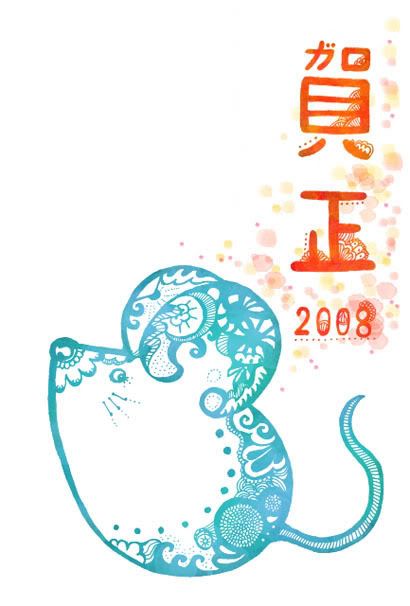
A brilliant up and coming graphic designer in Tokyo, Yuki Nakano designed this nengajo to welcome 2008: The Year of the Rat. The design of most nengajo includes the junishi, or Oriental zodiac animal, of the New Year.
Oshogatsu, or New Year's, is a very special time in Japan—a time for people return to their ancestral homes, spend time with their families and get in touch with their roots. Perhaps the most honored and celebrated of the Japanese holidays, Oshogatsu is a three-day event beginning with Omisoka (New Year's Eve) and lasting through the first three days of the year. Many people wear traditional clothing, like kimono, and play traditional games, such as uta garuta. Preparations begin long in advance as people clean their homes from top to bottom (known as Osouji), prepare Osechi ryori (traditional New Year's food eaten during the forst three days of the new year), and write nengajo, or New Year's greetings.
These days, many people use designs including photos of themselves or their families on their nengajo.
Much like the Christmas cards exchanged in the US and abroad, nengajo are an important part of Japan's New Year's festivities. Now an established tradition, the exchange of these New Year's greetings began in 1873, when postcards were first introduced to Japan. Today, the average family sends over a hundred nengajo to family, friends and colleagues, and businesses mail them to all their customers.
New Year's is a time for wafuku (traditional Japanese clothing) and Osechi ryori, traditional Japanese New Year's food.
Like many Japanese traditions, there is a specific nengajo etiquette code that has no equal in Western culture. While Christmas cards arrive anytime from Thanksgiving to New Year's, nengajo are expected to be delivered on January 1st, not a day before or after. Domestic mail usually only takes a day or two to be delivered, but nengajo can be posted early in special temporary mail boxes to ensure they arrive on time. Every card put into these boxes between December 15th and December 25th gets a special postmark and is delivered promptly on New Year' Day. Waiting for your bundle of postal love (they literally arrive bound together) and reading the flood of New Year’s wishes on January 1st is a cherished holiday tradition, similar to waiting for presents and opening them on Christmas.
When a surprise nengajo arrives from someone you have forgotten, it is always acceptable to send your greetings on January 6, reminding them to take care in the cold weather (寒中お見舞いもしあげます: kanchu omimai moshiagemasu). If someone you know has recently lost a loved one, you should not send a nengajo in observance of the family's mourning.
Of course, if you are a card-carrying gaijin, you are theoretically exempt from all of these rules. Why not surprise your friends and colleagues with your astounding nengajo knowledge and skill? The same gracious people that praise your ability to use chopsticks and poor attempts at speaking Japanese will be thrilled with the thoughtful consideration and effort, regardless of when your nengajo arrives.

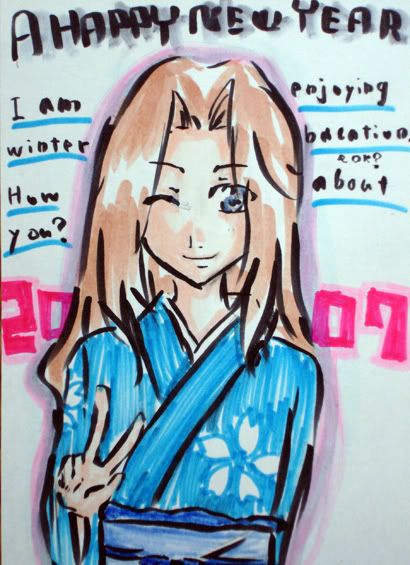
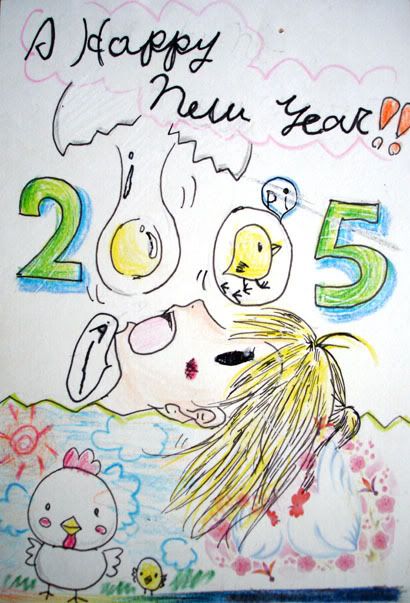
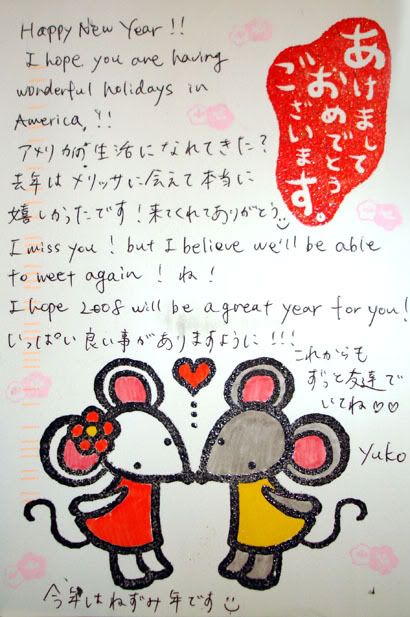

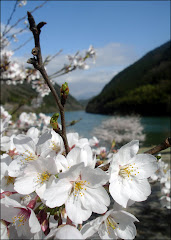

2 comments:
明けましておめでとうさんどす。
Akemashite Omedeto-sandosu!
I got a New Year's card too... from only one person... wink, wink!
Post a Comment